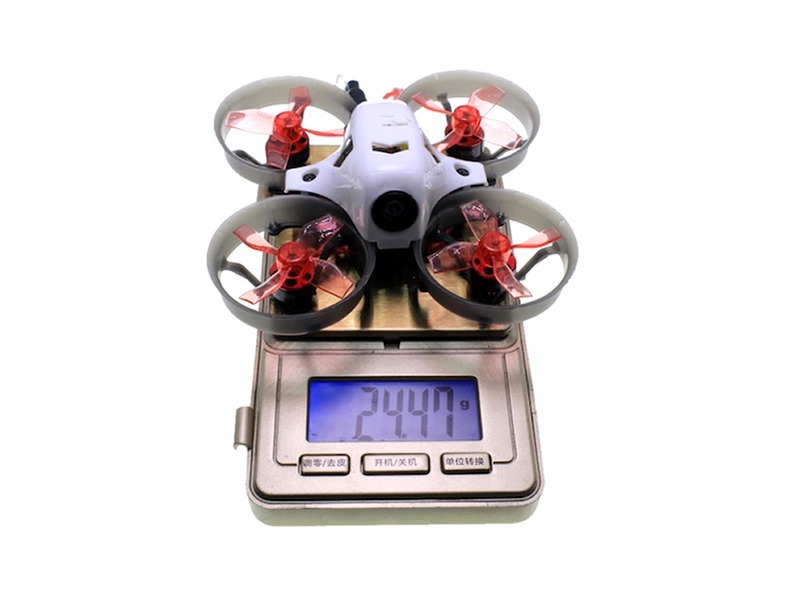What is 3D flying in RC?

3D flying in RC (Radio Controlled) is a type of aerobatic maneuvering that involves flying an RC aircraft in three dimensions. This type of flying is usually done with a specialized type of RC aircraft known as a 3D plane. 3D flying is a challenging and exciting way to fly and requires a great deal of skill and practice to master.
When flying in 3D, the pilot must be able to control the aircraft in all three axes of flight: pitch, roll, and yaw. Pitch is the up and down movement of the aircraft, roll is the side-to-side movement, and yaw is the rotation of the aircraft around its vertical axis. To perform 3D maneuvers, the pilot must be able to control the aircraft in all three axes simultaneously.
The most common 3D maneuvers are loops, rolls, snaps, spins, and inverted flight. Loops involve flying the aircraft in a circular pattern, with the nose of the aircraft pointing up and down as it goes around. Rolls involve flying the aircraft in a side-to-side motion, with the wings pointing up and down as it goes around. Snaps involve quickly changing the direction of the aircraft in mid-air. Spins involve rotating the aircraft around its vertical axis. Inverted flight involves flying the aircraft upside down.
To perform 3D maneuvers, the pilot must have a good understanding of the aircraft’s flight characteristics and be able to control the aircraft in all three axes simultaneously. The pilot must also be able to anticipate the aircraft’s movements and be able to react quickly to any changes in the aircraft’s attitude.
3D flying is a great way to challenge yourself and take your RC flying skills to the next level. It requires a great deal of practice and skill to master, but the rewards are worth it. 3D flying is a great way to show off your skills and impress your friends. It can also be a great way to relax and have fun.
No matter what type of RC aircraft you fly, 3D flying can be a great way to take your flying skills to the next level. With practice and dedication, you can become an expert 3D flyer and show off your skills to your friends.
Comments / Question
2. Not understanding the principles of 3D flight.
3. Not taking the time to practice and master the basics of 3D flight.
4. Trying to fly too fast too soon.
5. Not taking the time to properly tune the plane before attempting 3D maneuvers.
6. Not understanding the importance of proper motor and battery setup.
7. Not understanding the importance of proper CG balance.
8. Not understanding the importance of proper control throws.
9. Not understanding the importance of proper propeller selection.
10. Not understanding the importance of proper trim settings.
2. Check the weather conditions before flying and adjust your flight plan accordingly.
3. Fly in an open and unobstructed area.
4. Stay within your skill level, and don’t try maneuvers you are not comfortable with.
5. Keep an eye on your battery levels and land before they get too low.
6. Use a spotter to monitor your flight and help you stay aware of your surroundings.
7. Make sure your transmitter and receiver are in good working order and that they are set to the same frequency.
8. Fly at a reasonable distance from bystanders.
9. Avoid flying in restricted airspace.
10. Respect the privacy of those on the ground.
2. Hand-eye coordination: The ability to coordinate your hand movements with what you see in the 3D environment.
3. Timing: The ability to anticipate and react quickly to changing conditions.
4. Patience and practice: Continuous practice is essential to becoming proficient in 3D flying.
5. Risk assessment: Knowing which maneuvers are safe to attempt and which ones to avoid.
6. Technical knowledge: Understanding the basics of aerodynamics and how to control your aircraft.
7. Judgment and decision-making: Making the right calls in the heat of the moment.
2. Increased Maneuverability: 3D flying gives you the ability to maneuver your aircraft in tight spaces and around obstacles.
3. Increased Precision: 3D flying allows you to fly with greater precision and accuracy, allowing you to perform more complex maneuvers.
4. Increased Fun: 3D flying is a great way to challenge yourself and have fun while doing it. It’s a great way to take your RC flying to the next level.

